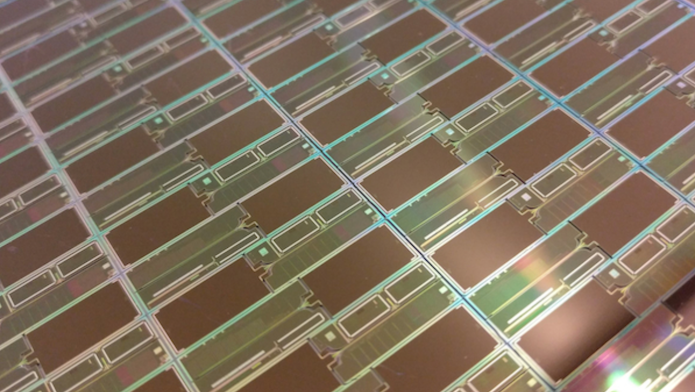‘Neuropixels’ Expand Access to the Brain

Hair-thin probes densely packed with recording sites, called Neuropixels, dramatically enhance the ability to record from many cells simultaneously. Most electrophysiology experiments track tens of individual cells. Neuropixels can record from hundreds or even thousands of cells. Researchers described the new technology in a paper in Nature in November.
“As long as you place them appropriately, you can really study how different parts of the brain work together at the neuronal level. This is a game changer,” Matteo Carandini, a neuroscientist at University College London and an SCGB investigator, told Howard Hughes Medical Institute (HHMI). Carandini and Kenneth Harris, also an SCGB investigator at UCL, helped test and guide development of the probes.
The leap in recording capacity comes from novel chip design, the result of a partnership between scientists and chip designers. As SCGB noted in a story in April (“Coming Soon: Routine Recording From Thousands of Neurons”), most electrode arrays are built in academic foundries and house 64 sensors in a 1,050-square-micron device. Neuropixels were designed and manufactured in a foundry called Imec, owned by the Flemish government. The Imec probe packs nearly 1,000 recording sites onto a single shank about 1,400 microns square and 10 millimeters long, which spans the full depth of a rat brain.
A major challenge in designing such arrays is figuring out how to process data from that number of sensors and transport it out of the brain, all in a tiny package. “You have to integrate, amplify and sort the signals, then digitize and combine them into one or a few data streams,” Tim Harris (no relation to Kenneth Harris), a physicist at the Howard Hughes Medical Institute’s Janelia Research Campus, in Ashburn, Virginia, told SCGB in April.
The project was funded by HHMI, the Allen Institute for Brain Science, the Gatsby Charitable Foundation, and Wellcome. “It was a fantastic leap of faith that they would make such an investment in what at the time looked like risky technology,” Harris told SCGB in April. “It’s very unlikely that [the U.S. National Institutes of Health] would have gambled on it.”
At the SCGB annual meeting in September 2017, Harris reported that probes will be open to customer sale starting July 2018 at a cost of 1,000 euros (about $1,160) per unit. The group plans to have a 100 probe/month capacity.
HHMI outlines some highlights from the Nature paper:
- This is the first report of a large (10 mm), dense (100 sites/mm), implantable neural recording device
- With each probe, scientists see hundreds of well-resolved single-neuron signal traces
- The probes can record simultaneously across multiple brain regions
- Researchers have recorded from more than 700 neurons using two Neuropixels probes
- Probes yielded high neuron count and excellent signal-to-noise performance with no special techniques required
Currently, more than 400 prototype Neuropixels probes are in use in consortium members’ labs across the globe, including at Gatsby, Wellcome, HHMI and the Allen Institute. The International Brain Lab, a collaboration among 20 labs funded by the SCGB and the Wellcome Trust, will use Neuropixels in its experiments. Researchers will present their newest Neuropixels data at the November Society for Neuroscience meeting in Washington, D.C.


